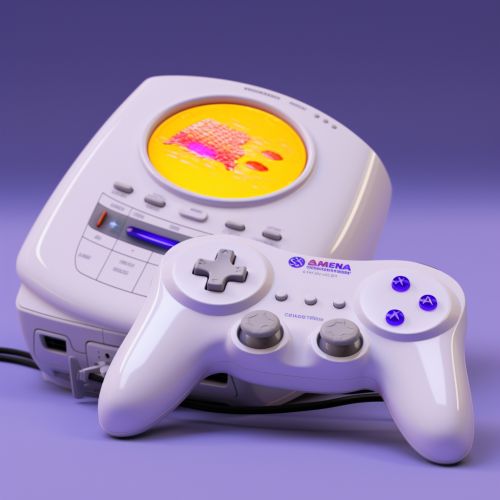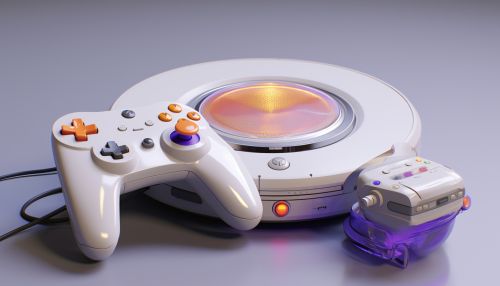Sega Dreamcast
Overview
The Dreamcast is a home video game console released by Sega on November 27, 1998 in Japan, September 9, 1999 in North America, and October 14, 1999 in Europe. It was the first in the sixth generation of video game consoles, preceding PlayStation 2, GameCube, and Xbox.


History
The Dreamcast was Sega's final home console, marking the end of the company's 18 years in the console market. In contrast to the expensive hardware of the unsuccessful Sega Saturn, the Dreamcast was designed to reduce costs with "off-the-shelf" components, including a Hitachi SH-4 CPU and an NEC PowerVR2 GPU.
Hardware
The Dreamcast's main CPU has a 200 MHz clock rate and is capable of 360 MIPS (Million Instructions Per Second). The system's GPU is a PowerVR2 CLX2 chipset, capable of rendering up to 7 million polygons per second. The Dreamcast also includes a Yamaha AICA sound processor and 16 MB of video RAM.
Software
The Dreamcast used a proprietary operating system called Dreamcast System Software, although the console is also able to boot up and play games without it. The system software provides various features, such as managing memory cards and configuring the console's settings.
Legacy
Despite its short lifespan, the Dreamcast has garnered cult status for its history and features. It is remembered for its library of games, including titles like Sonic Adventure, Crazy Taxi, and Shenmue, as well as innovative features like the Visual Memory Unit and online gaming service SegaNet.
